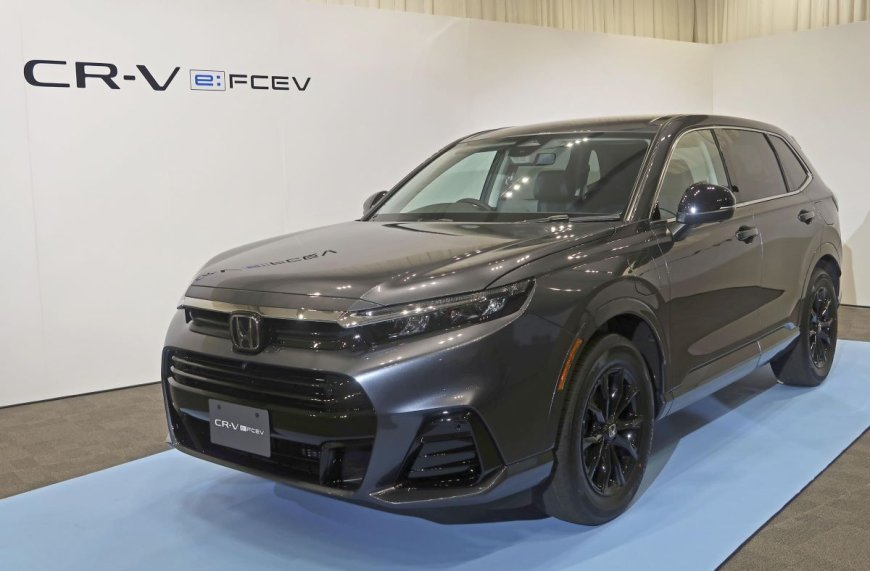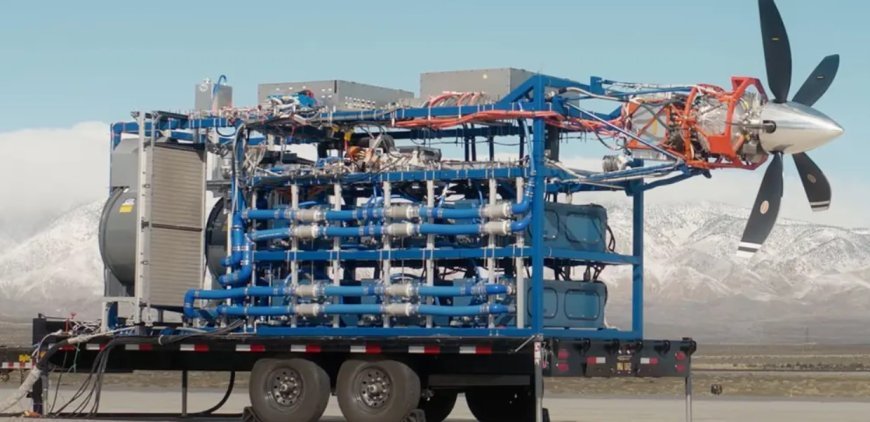Latest Updates: Hydrogen in Transportation
Discover Honda's groundbreaking CR-V e:FCEV, the first Japanese plug-in hydrogen fuel cell vehicle, boasting a 600km range with one hydrogen refill. A collaboration with GM, this innovation sets Honda on a path to replace internal combustion engines by 2040 with FCVs and electric vehicles. Also, explore advancements in hydrogen-powered transport, including aircraft and marine engines, and cleaner hydrogen production methods.

Honda Unveils Plug-In Hydrogen Fuel Cell Vehicle

Image: Honda's new CR-V e:FCEV plug-in fuel cell vehicle
On February 28, Honda unveiled the CR-V e:FCEV, a plug-in hydrogen fuel cell vehicle. With the launch of this vehicle, Honda becomes first Japanese company to offer a plug-in fuel cell vehicle. Honda and US auto giant General Motors (GM) collaborated to create the fuel cell system for the new vehicle. With just one hydrogen refill, the vehicle can go over 600 kilometers, and it can go over 60 kilometers between charges.
The car is set to be released in Japan and North America later this year. Honda has made public its plan to gradually phase out internal combustion engines. By 2040, Honda wants all new cars sold globally to be FCVs, or electric vehicles.
World’s largest liquid hydrogen-powered aircraft

The 1-megawatt (MW) liquid hydrogen fuel cell test has been concluded by US-based Universal Hydrogen. This test was the biggest of its kind worldwide for an airplane powertrain driven by liquid hydrogen. According to Universal Hydrogen's press statement, the test proceeded flawlessly for an hour and forty minutes after the liquid hydrogen module was linked to the Iron Bird, the company's operational model of its drivetrain.
The company has been working on electric powertrain for aircraft. However, after multiple trials, they realized that large haul flights may not be feasible with this technology due to the increased weight and significantly lower energy density of batteries.
Mitsui Achieves First Hydrogen Combustion
Japan's Mitsui E&S has achieved hydrogen combustion of a large marine two-stroke engine, marking a significant milestone in the development of hydrogen as an alternative fuel. One of the four cylinders of the test engine 4S50ME-T (output 7 MW, rated speed 117 rpm, MEP = 2.10 MPa) was converted to a hydrogen operation, based on the LNG-fired ME-GI engine design, and high-pressure hydrogen gas was supplied from the hydrogen gas supply facility (liquid hydrogen tank, hydrogen gas compressor, etc.) completed*2 in October last year. The coupling operation was successfully conducted with this test engine at 100% load without any problems such as hydrogen leakage.
Louis Dreyfus Armateurs Liquid Hydrogen SOV Concept
Louis Dreyfus Armateurs (LDA) unveiled a concept for a liquid hydrogen-powered service operations vessel (SOV). The company is headquartered in France and working alongside Norwegian naval architecture firm Salt Ship Design. The concept SOV would be able to operate 95% of the time with zero carbon emissions. According to the company, "this would help in preventing the release of about 4000t of Co2 per year".
"We believe that H2 as fuel is one of the key enablers for reducing the impact of the shipping industry in the coming years and help reach the challenging carbon emission targets for the whole industry," the company added.
Hydrogen production using ammonia without fossil fuels
Korea Institute of Energy Research has been working on reducing ammonia to its core elements: hydrogen and nitrogen. The innovation uses temperatures of around 1,112 degrees Fahrenheit to decompose the ammonia. Ruthenium, a platinum metal, is used as a "catalyst" during a process called pressure swing adsorption.
Hydrogen is being used to power vehicles, trains, and aircraft. however, most of the hydrogen is produced using the natural gas, a fossil fuel. Researchers across the globe are working tirelessly to find alternative ways to produce hydrogen in cleaner way.
There has been a buzz around Green Hydrogen and White Hydrogen.
What's Your Reaction?























